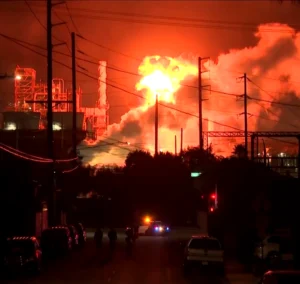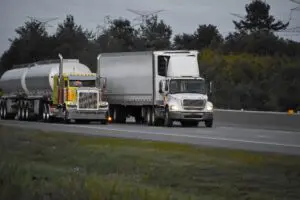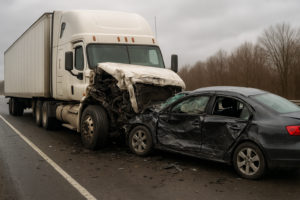A new mandate by the FMCSA will take effect on November 18.
The Federal Motor Carrier Safety Administration (FMCSA) has implemented a new mandate that will allow federal regulators to require state driver’s licensing agencies to downgrade a truck driver’s commercial driving license if they fail a drug or alcohol test and are prohibited from driving.
This mandate, which will take effect on November 18, is part of the FMCSA’s Drug & Alcohol Clearinghouse II regulation. Its goal is to penalize drivers who continue operating vehicles after receiving violations for alcohol or drug use, aiming to eliminate this dangerous practice from the road transport industry.
Previously, the regulation required employers to consult the Clearinghouse for drug and alcohol violations of their current and prospective employees before allowing them to drive and to conduct annual checks on every driver they employ. To enforce stricter penalties, the new Clearinghouse II will require state agencies to revoke commercial driving privileges for drivers prohibited under the system, downgrading their license until they complete the reintegration process. States will have 60 days to record this downgrade in the Commercial Driver’s License Information System (CDLIS).

Clearinghouse II: stricter measures due to non-compliance by truck drivers
The Clearinghouse, implemented on January 6, 2020, by congressional mandate, has successfully removed many drivers with drug-related violations from the roads. However, approximately 177,000 drivers remain in a prohibited driving status after failing drug tests and not completing the federal return-to-duty process.
The new rule will require state Departments of Motor Vehicles (DMVs) to downgrade the commercial licenses of these drivers. Once a driver is placed in a prohibited status, states will have 60 days to downgrade their CDL or learner’s permit. Some states have already started this process, issuing warning letters to drivers, notifying them that they must begin the return-to-duty process or face the downgrade of their license.
Returning to work involves several steps, which leads many drivers to avoid the process. However, following this strict program is essential to ensure they return to the roads without posing a danger to themselves or others, in compliance with FMCSA regulations. Clearinghouse II will enforce stricter measures to encourage drivers to complete the process, as a downgraded license will prevent them from performing the same commercial activities.
Additionally, regulators have begun planning annual inspections of the program to ensure that state CDL programs comply with all new federal requirements. Price indicated there could be potential consequences for states that fail to meet the new mandate.


World Smile Day: benefits of sharing a smile
World Smile Day is celebrated on the first Friday of October, so let’s do an act of kindness and help one person smile. World Smile

Massive fire at Chevron refinery sparks safety concerns and fuel price fears
A massive fire broke out at Chevron’s refinery in El Segundo, the largest oil production facility on the West Coast. On the night of October

MEET operation: 82 commercial vehicles inspected at the Wyoming-Colorado border
The MEET operation, a traffic enforcement operation targeting CMVs, was carried at the Wyoming and Colorado border. A traffic enforcement operation targeting commercial motor carriers,

Road safety reforms: coalition demands for results
The Truck Safety Coalition (TSC) calls for road safety reforms following deadly truck crash report. The Truck Safety Coalition (TSC) is calling for safety reforms

DOT suspends federal funding in New York amid civil rights review
U.S. DOT announces interim final rule banning race- and sex-based contracting requirements in federal grants. The U.S. Department of Transportation (DOT) has issued a statement

U.S. government shutdown begins: how will the transportation industry be affected?
A U.S. government shutdown began a shutdown on October 1, 2025, but the Department of Transportation released its operational plan. The U.S. government shutdown began
